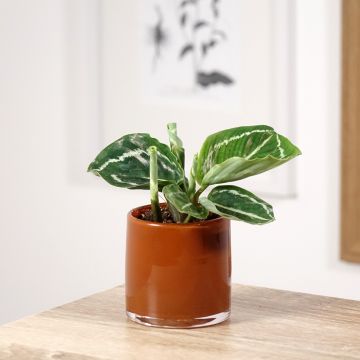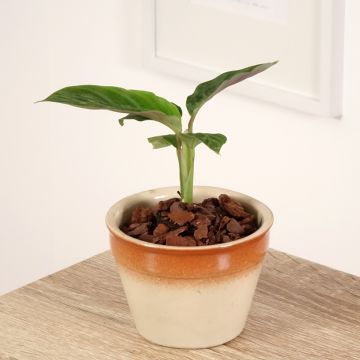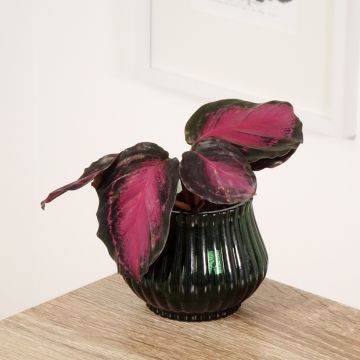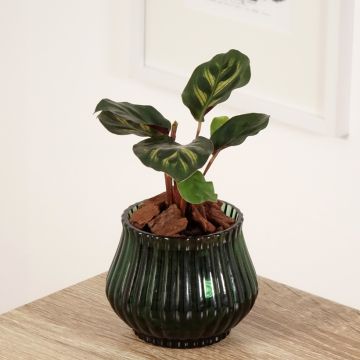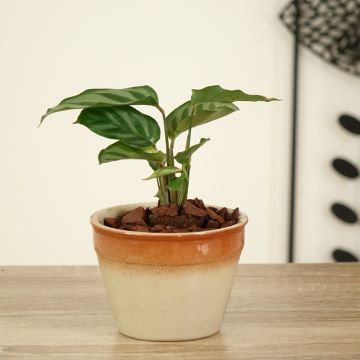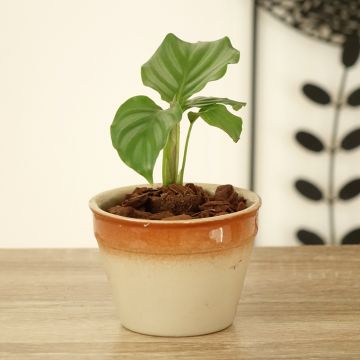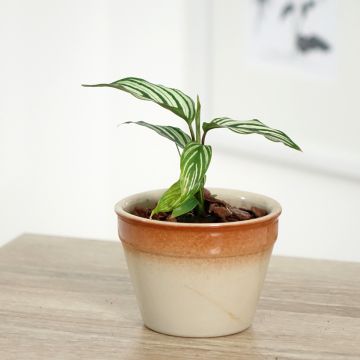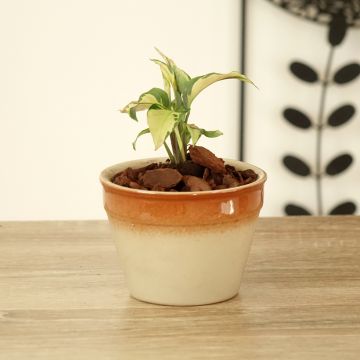

Calathea ornata - Pinstripe Calathea


Calathea ornata - Pinstripe Calathea


Calathea ornata - Pinstripe Calathea
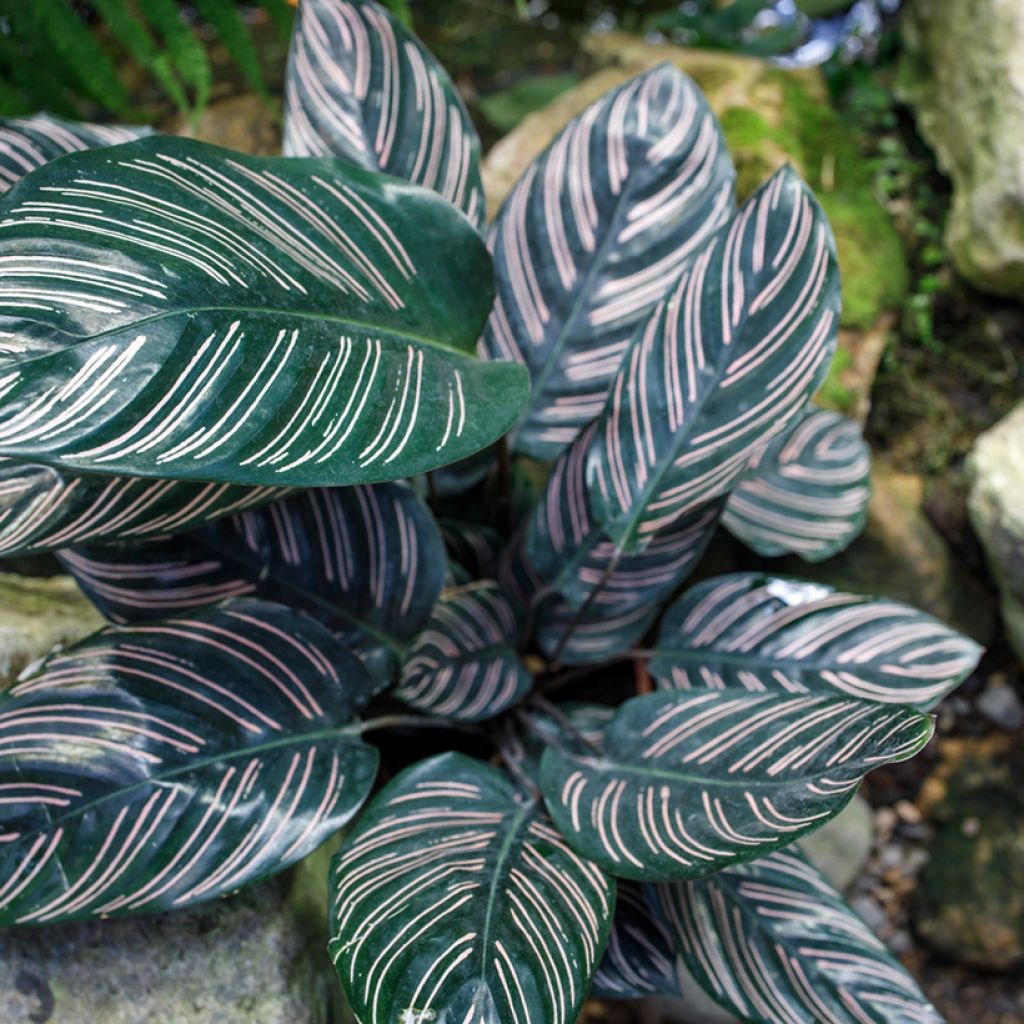

Calathea ornata - Pinstripe Calathea


Calathea ornata - Pinstripe Calathea


Calathea ornata - Pinstripe Calathea
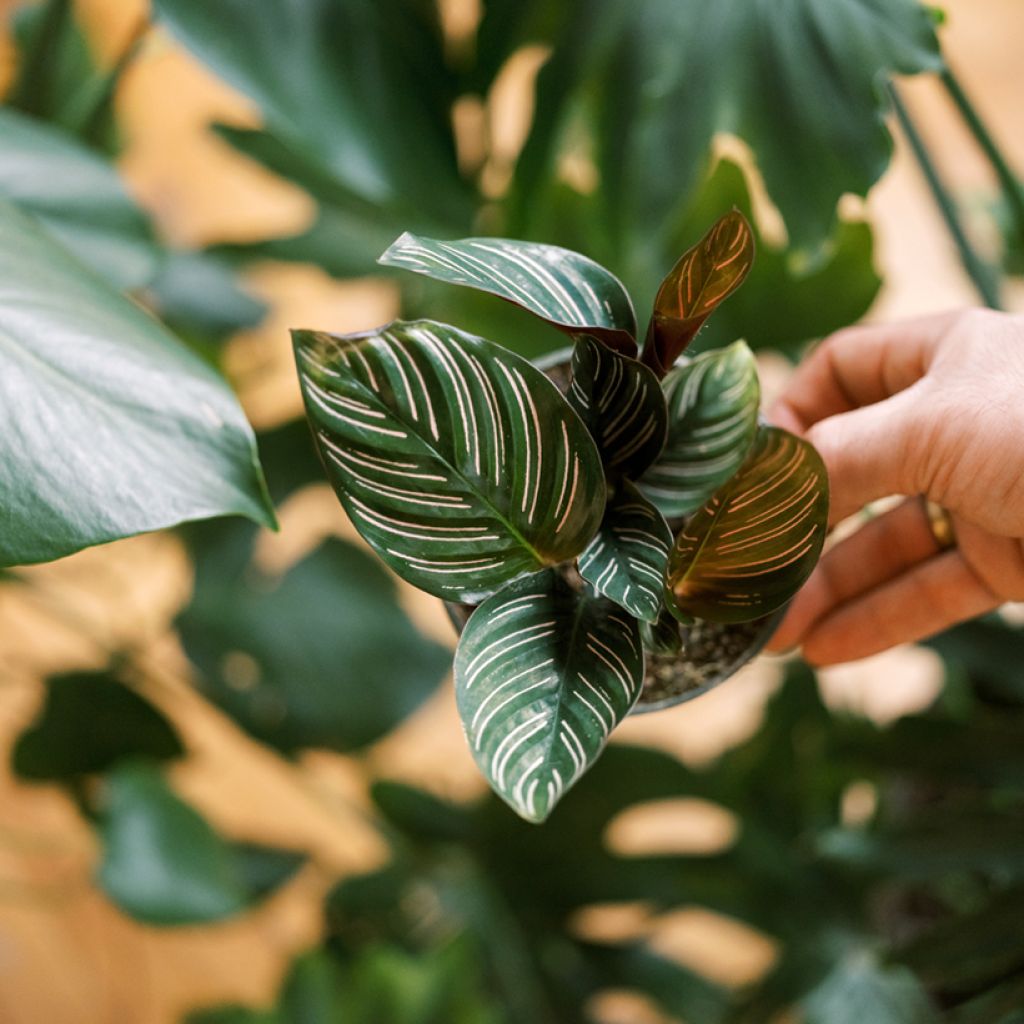

Calathea ornata - Pinstripe Calathea
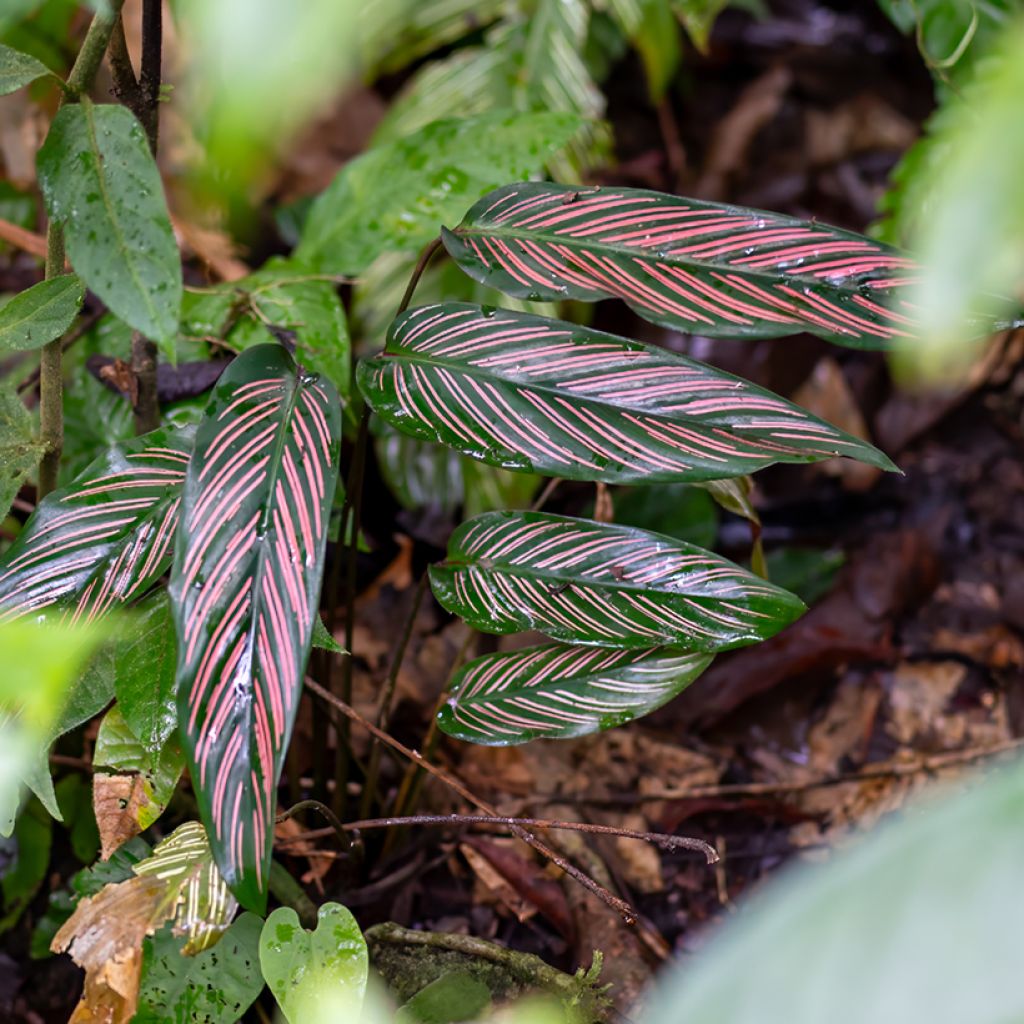

Calathea ornata - Pinstripe Calathea
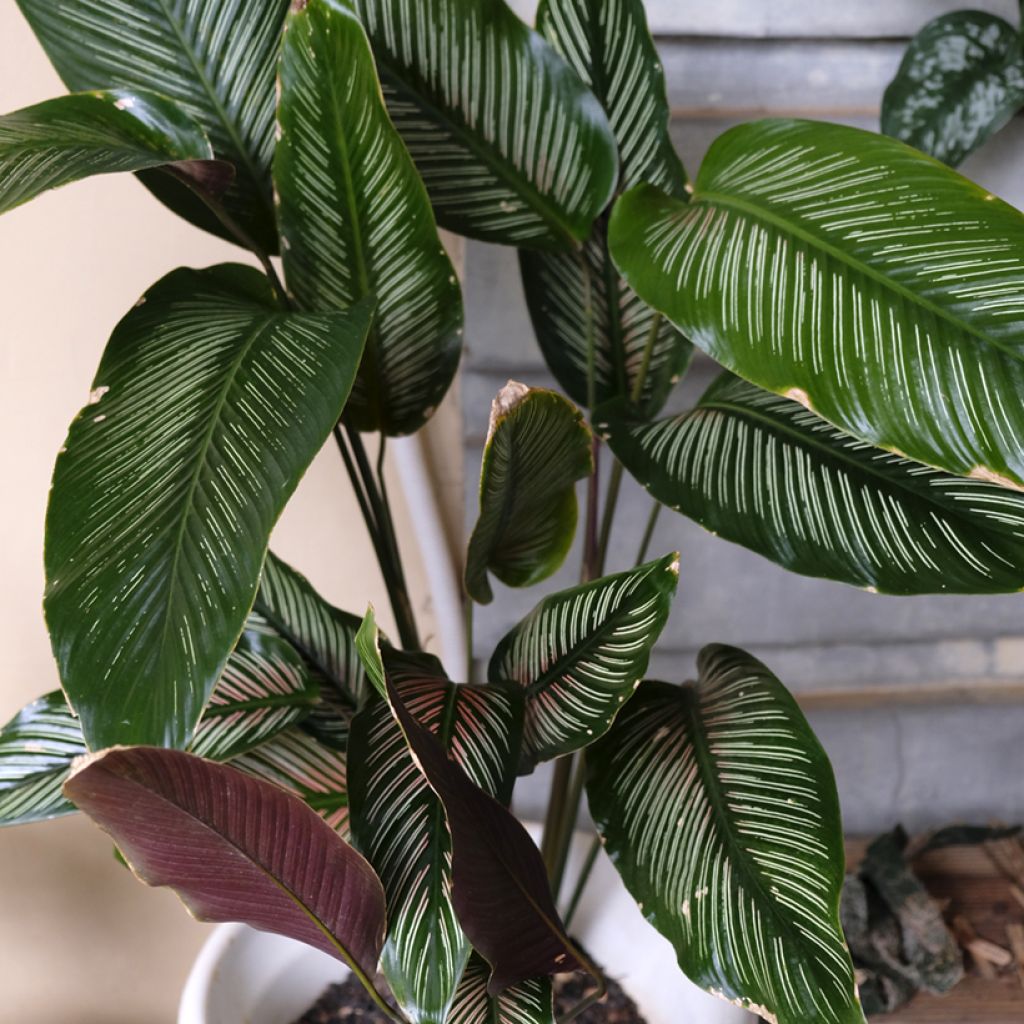

Calathea ornata - Pinstripe Calathea
Calathea ornata - Pinstripe Calathea
Calathea ornata
Peacock plant, Pinstripe Calathea, Pinstripe Plant
Home or relay delivery (depending on size and destination)
Schedule delivery date,
and select date in basket
This plant carries a 30 days recovery warranty
More information
We guarantee the quality of our plants for a full growing cycle, and will replace at our expense any plant that fails to recover under normal climatic and planting conditions.

Description
The Calathea ornata, commonly known as the - Pinstripe Calathea or Pinstripe Plant, is a species of calathea with spectacular foliage. This houseplant initially produces bright green young leaves striped with pinkish-white from the central vein. The mature foliage takes on a very dark green hue with white stripes and a pink-grey underside. The large leaves are ovate to rounded, thick, and lustrous. Not too demanding, this calathea tolerates average humidity and prefers moderate light, a few metres away from windows and without direct sunlight.
Belonging to the Marantaceae family, the Calathea ornata is native to southeastern Colombia to southwestern Venezuela, where it thrives under the dense canopy of humid forests. It has synonyms such as Goeppertia ornata, Maranta ornata, Maranta regalis. Its large, ovate leaves have a thick and glossy texture. They feature a dark green upper surface at maturity, marked with white stripes from the midrib, while the underside is pink-grey. This unique colouration makes it a centrepiece in interior decors. Additionally, like other calatheas, its leaves fold up at night, a phenomenon known as nyctinasty.
The Calathea ornata is a beautiful species with strikingly contrasted leaves. It tolerates ambient humidity simply above 50% and moderate watering. Like most calatheas, it prefers moderate light, a few metres away from windows and without direct sunlight, which can damage its foliage. Ideal for adding a colourful and exotic touch, the Calathea is ideally suited to spaces such as a living room, bedroom, or office. To create a harmonious atmosphere, it can be paired with plants with similar requirements such as the Maranta leuconeura, appreciated for its variegated foliage, or the Stromanthe sanguinea 'Triostar' with its tricolour leaves. These combinations will enhance the jungle effect while adding beautiful plant diversity.
Report an error about the product description
Calathea ornata - Pinstripe Calathea in pictures




Foliage
Plant habit
Botanical data
Calathea
ornata
Marantaceae
Peacock plant, Pinstripe Calathea, Pinstripe Plant
South America
Other Calathea
View all →Location
Location
Maintenance and care
Potting advice, substrates and fertilisers
Houseplant care
Disease and pest advice
Maintenance and care
This item has not been reviewed yet - be the first to leave a review about it.
Haven't found what you were looking for?
Hardiness is the lowest winter temperature a plant can endure without suffering serious damage or even dying. However, hardiness is affected by location (a sheltered area, such as a patio), protection (winter cover) and soil type (hardiness is improved by well-drained soil).
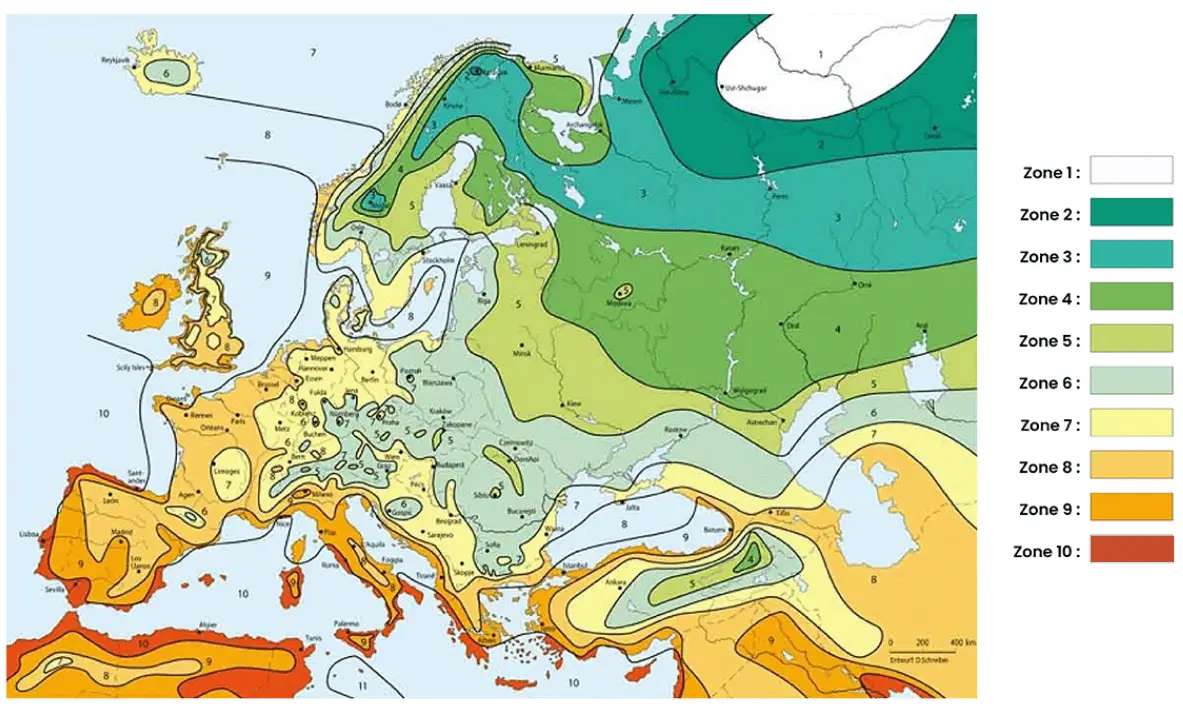
Photo Sharing Terms & Conditions
In order to encourage gardeners to interact and share their experiences, Promesse de fleurs offers various media enabling content to be uploaded onto its Site - in particular via the ‘Photo sharing’ module.
The User agrees to refrain from:
- Posting any content that is illegal, prejudicial, insulting, racist, inciteful to hatred, revisionist, contrary to public decency, that infringes on privacy or on the privacy rights of third parties, in particular the publicity rights of persons and goods, intellectual property rights, or the right to privacy.
- Submitting content on behalf of a third party;
- Impersonate the identity of a third party and/or publish any personal information about a third party;
In general, the User undertakes to refrain from any unethical behaviour.
All Content (in particular text, comments, files, images, photos, videos, creative works, etc.), which may be subject to property or intellectual property rights, image or other private rights, shall remain the property of the User, subject to the limited rights granted by the terms of the licence granted by Promesse de fleurs as stated below. Users are at liberty to publish or not to publish such Content on the Site, notably via the ‘Photo Sharing’ facility, and accept that this Content shall be made public and freely accessible, notably on the Internet.
Users further acknowledge, undertake to have ,and guarantee that they hold all necessary rights and permissions to publish such material on the Site, in particular with regard to the legislation in force pertaining to any privacy, property, intellectual property, image, or contractual rights, or rights of any other nature. By publishing such Content on the Site, Users acknowledge accepting full liability as publishers of the Content within the meaning of the law, and grant Promesse de fleurs, free of charge, an inclusive, worldwide licence for the said Content for the entire duration of its publication, including all reproduction, representation, up/downloading, displaying, performing, transmission, and storage rights.
Users also grant permission for their name to be linked to the Content and accept that this link may not always be made available.
By engaging in posting material, Users consent to their Content becoming automatically accessible on the Internet, in particular on other sites and/or blogs and/or web pages of the Promesse de fleurs site, including in particular social pages and the Promesse de fleurs catalogue.
Users may secure the removal of entrusted content free of charge by issuing a simple request via our contact form.
The flowering period indicated on our website applies to countries and regions located in USDA zone 8 (France, the United Kingdom, Ireland, the Netherlands, etc.)
It will vary according to where you live:
- In zones 9 to 10 (Italy, Spain, Greece, etc.), flowering will occur about 2 to 4 weeks earlier.
- In zones 6 to 7 (Germany, Poland, Slovenia, and lower mountainous regions), flowering will be delayed by 2 to 3 weeks.
- In zone 5 (Central Europe, Scandinavia), blooming will be delayed by 3 to 5 weeks.
In temperate climates, pruning of spring-flowering shrubs (forsythia, spireas, etc.) should be done just after flowering.
Pruning of summer-flowering shrubs (Indian Lilac, Perovskia, etc.) can be done in winter or spring.
In cold regions as well as with frost-sensitive plants, avoid pruning too early when severe frosts may still occur.
The planting period indicated on our website applies to countries and regions located in USDA zone 8 (France, United Kingdom, Ireland, Netherlands).
It will vary according to where you live:
- In Mediterranean zones (Marseille, Madrid, Milan, etc.), autumn and winter are the best planting periods.
- In continental zones (Strasbourg, Munich, Vienna, etc.), delay planting by 2 to 3 weeks in spring and bring it forward by 2 to 4 weeks in autumn.
- In mountainous regions (the Alps, Pyrenees, Carpathians, etc.), it is best to plant in late spring (May-June) or late summer (August-September).
The harvesting period indicated on our website applies to countries and regions in USDA zone 8 (France, England, Ireland, the Netherlands).
In colder areas (Scandinavia, Poland, Austria...) fruit and vegetable harvests are likely to be delayed by 3-4 weeks.
In warmer areas (Italy, Spain, Greece, etc.), harvesting will probably take place earlier, depending on weather conditions.
The sowing periods indicated on our website apply to countries and regions within USDA Zone 8 (France, UK, Ireland, Netherlands).
In colder areas (Scandinavia, Poland, Austria...), delay any outdoor sowing by 3-4 weeks, or sow under glass.
In warmer climes (Italy, Spain, Greece, etc.), bring outdoor sowing forward by a few weeks.


































